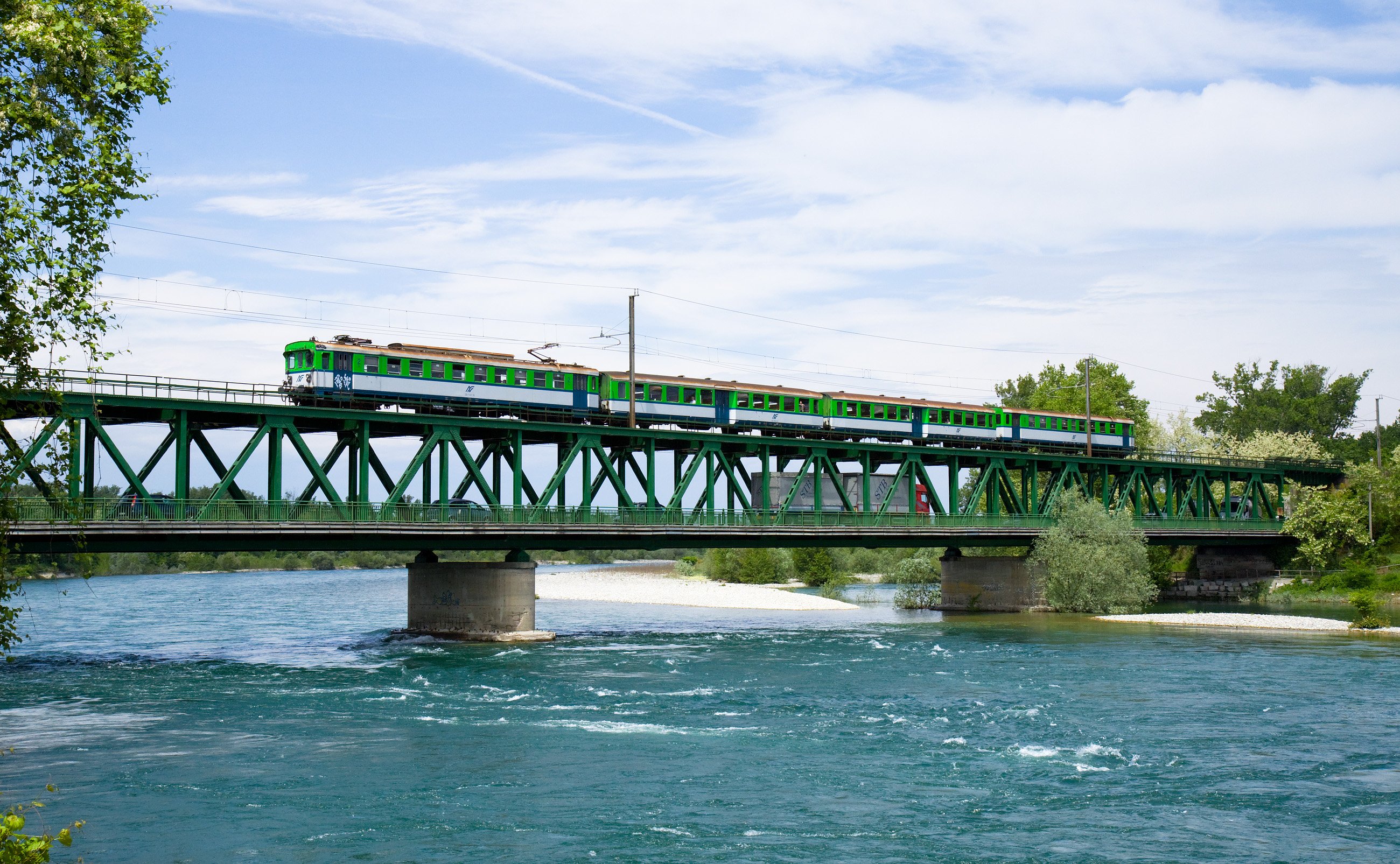
Bridge over the Ticino
The first bridge on the Ticino river, between Galliate and Turbigo on the Novara-Seregno line, was designed in 1880 by Milanese engineer Paolo Tatti and built by the firm Guazzoni. The bridge, completed in 1886, was 150 metres long and 5.5 metres wide: a three-span lattice girder bridge, it allowed the passage of trains on the upper part while the lower part was for road vehicles. On 23 June 1887, the first train travelled across the Ticino river, on what would soon become known as the “iron bridge”. In August 1944, during one of the darkest periods of Italian history, the bridge collapsed following damage sustained in the bombings. A pamphlet from November 1952, “Il Gallo”, written for the opening of the new bridge on the Ticino, remembers the collapse of the first iron bridge as follows, with a dash of humour: “Having withstood so-called “carpet” bombings for seventeen years, having digested three or four attempts at rearrangement courtesy of German dynamite, the battered old bridge just couldn’t take any more! One fine day, or rather one terrible day, it finally slid into the water. Almost as if it had decided to end it all! Poor bridge!” The bridge does in fact have a somewhat turbulent history: after a series of bureaucratic snags, construction of a new iron bridge, very similar to the old one, was entrusted to Ditta Bossi, a company which had already presented its own project at the end of the war. After eight long years the new bridge was finally finished in 1953, and despite several mishaps (see the official announcement of 20 November 1952), the long-awaited moment finally arrived: the Novara-Saronno section was reopened.
Gallery
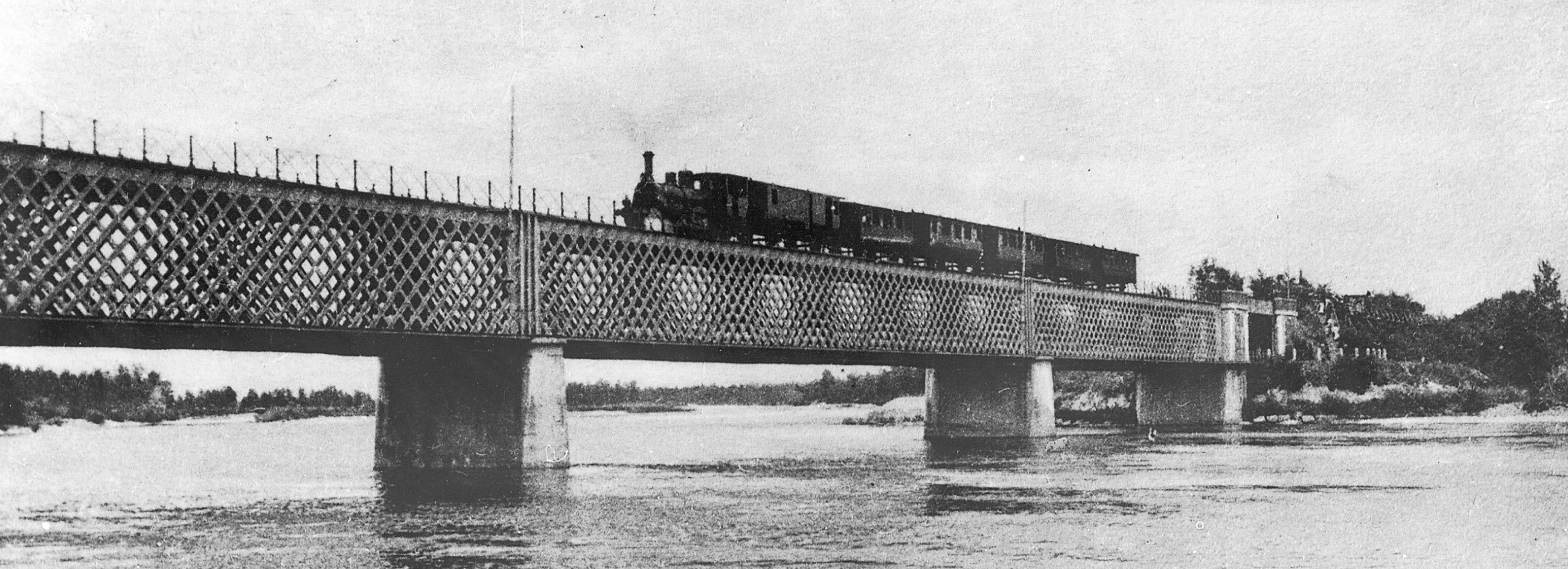
Train crossing the bridge Like the modern bridge, the lower part was open to road traffic. 
The bridge over the river Ticino, with a passing locomotive, in the early 1900s. It connected Milano with Novara at Turbigo and Galliate. 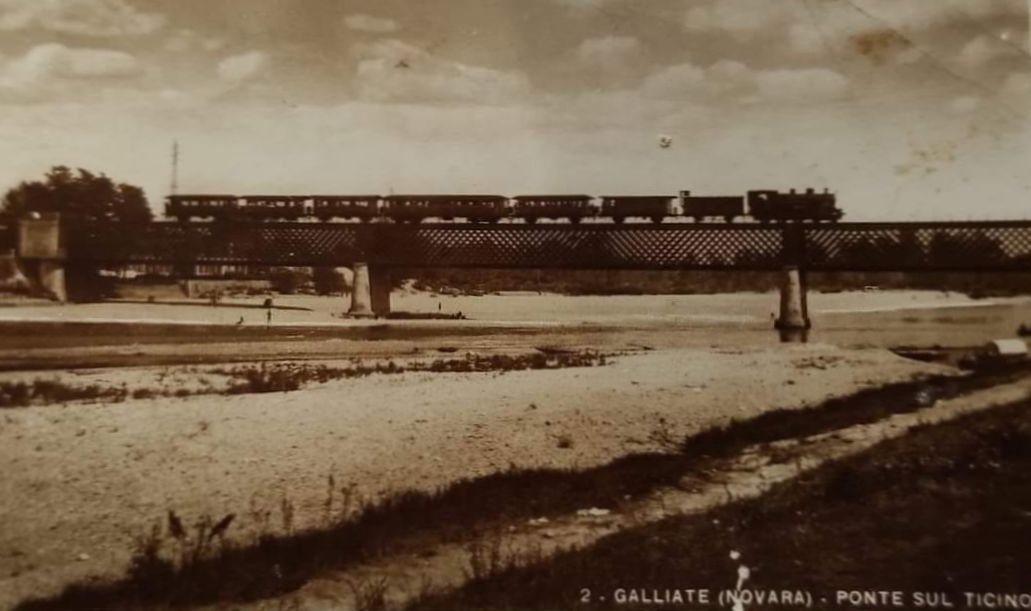
Bridge over the Ticino 
What was left of the first span of the bridge, on the Novara side, after the bombings of 1944. Work to rebuild the bridge proceeded, after the end of the war, until 1952. 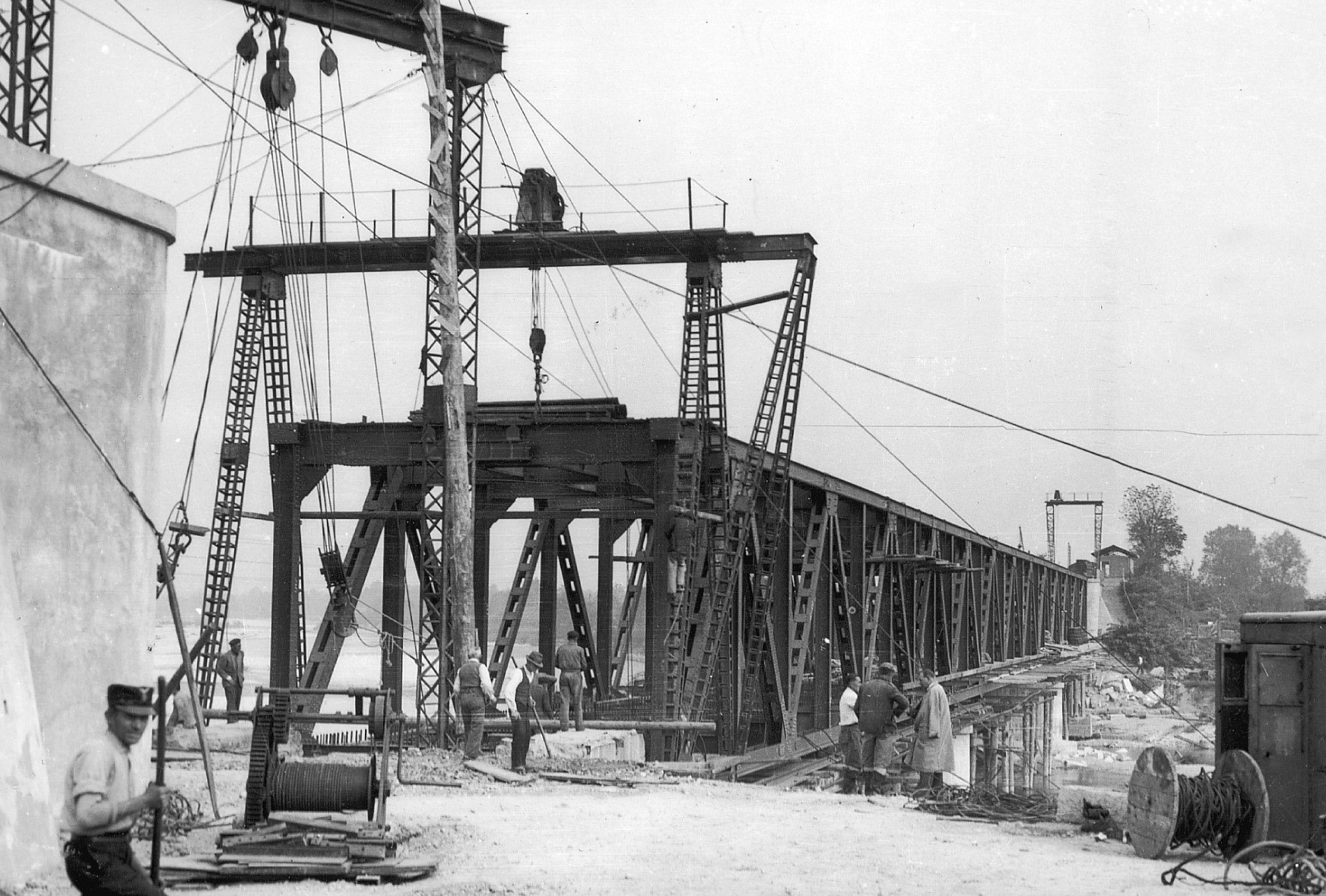
Reconstruction works on the bridge over the Ticino 
The design for the new bridge over the Ticino 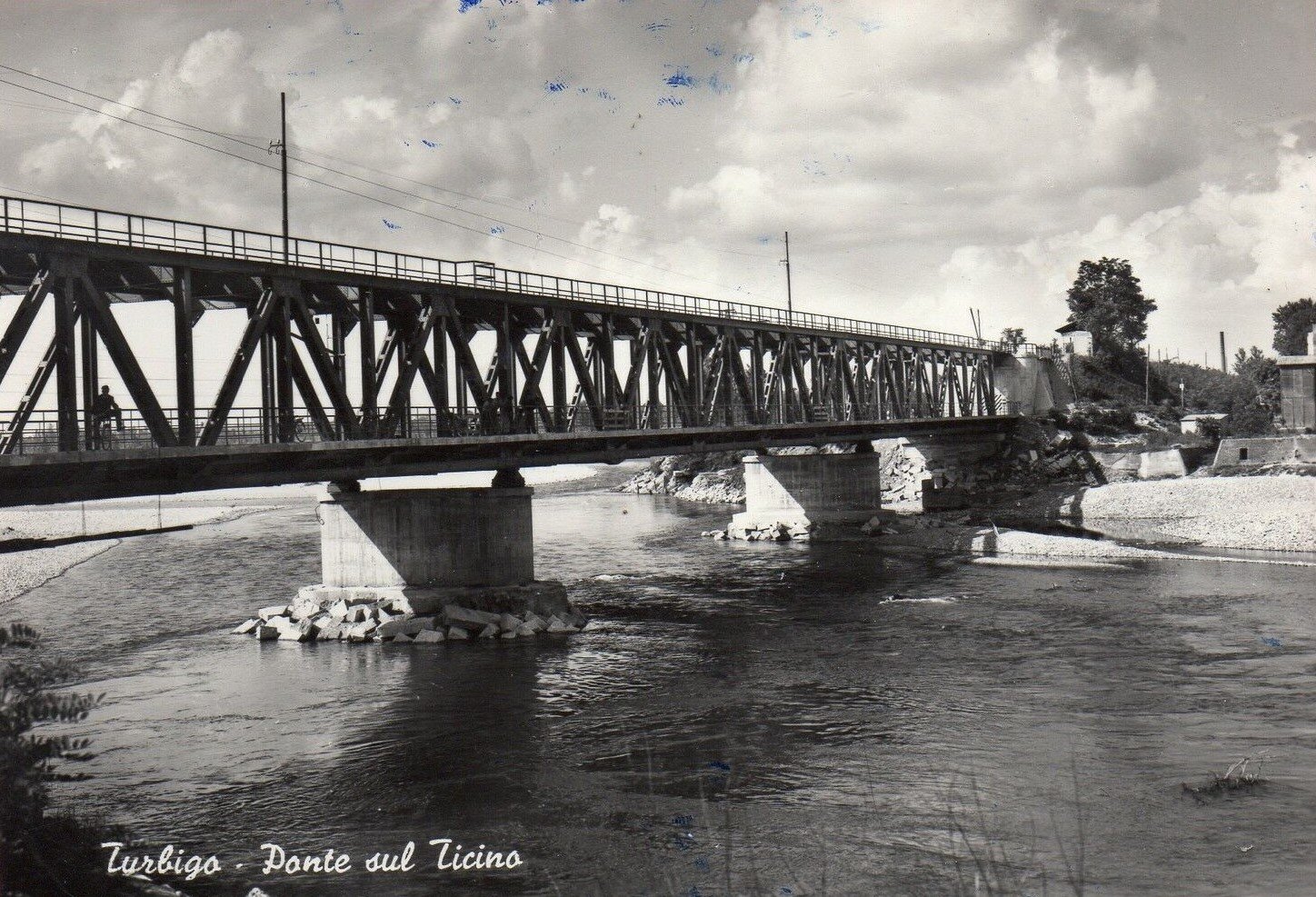
The new bridge over the Ticino, opened in 1952, on a postcard from the mid-1950s